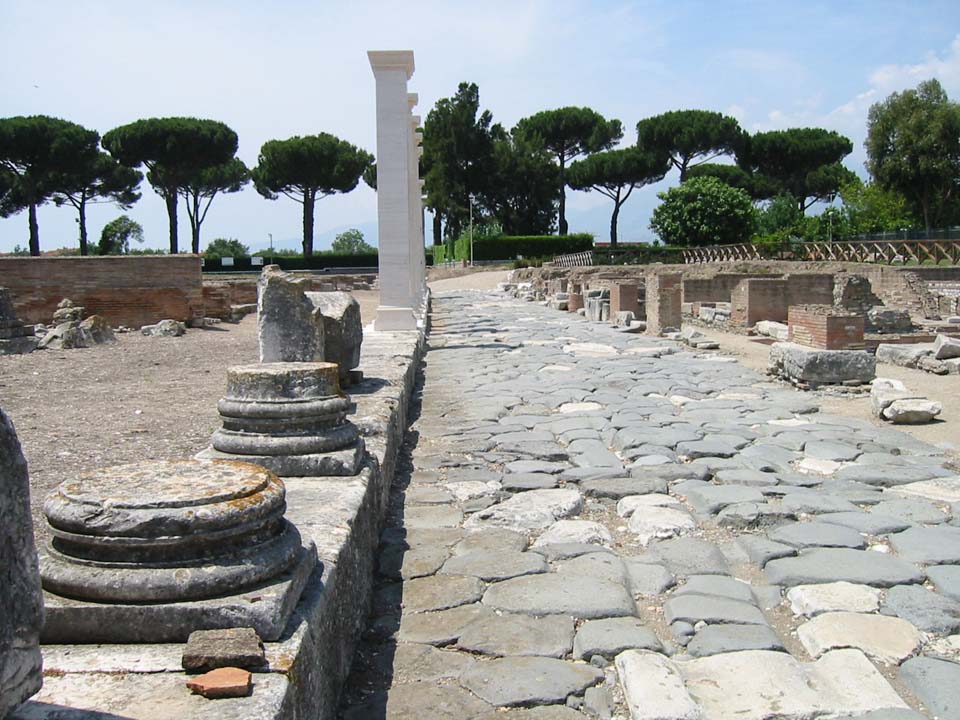
Now then, do you what a “buccinator” is? If you’ve been to medical school, you’d probably tell me that it’s a muscle at the side of the face, used in activities such as whistling or blowing. If you’re an ornithologist, you might tell me it’s a kind of swan. However, a “buccinator” is also the Anglicized word for someone who plays the buccina.
The buccina, in case you’re wondering, was a somewhat unwieldy brass instrument used in the armies of ancient Rome. The instrument was usually made of bronze and the tube bent around itself from the mouthpiece to the bell in the shape of a broad “C” shape. If you unwound one, assuming you had the time and inclination to do so, it would be about 12 feet long. The curved tube was strengthened by bar, which the performer held while the bell curved over his head and shoulder. We can say “he” rather than “she” because being a military instrument, they were always played by men.
The buccina was often as a signaling instrument to announce night watches or to summon soldiers. Sextus Julius Frontinus, the Roman author and soldier, relates a story about a Roman general who one night, found that he and his troops were surrounded by the enemy. They cunningly made their escape by leaving the buccinator behind to sound the watches throughout the night. History does not relate what happened to the unfortunate buccinator the following morning. Now you may be wondering why I am telling you all this. (The thought had crossed my mind – Ed.)
Well, today’s featured composer is Ottorino Respighi (reh-SPEE-ghee) an Italian violinist, teacher and musicologist and one of the leading Italian composers of the 20th century. In the final section of his orchestral work Pini di Roma (The Pines of Rome), the score includes parts for six “buccine”. It’s unlikely that Respighi expected the orchestral manager to search for genuine buccini players, because by the 20th century they were a bit thin on the ground. In practice, the buccini parts are usually played by modern brass instruments.
In many ways, Respighi was an extraordinary composer and although innovative, his music is harmonically more conservative than many of his contemporaries. It looks back rather than forward. His works include operas, ballets, orchestral suites, choral songs, chamber music and transcriptions of early Italian music. However, his best-known works are the three orchestral tone poems on historical Roman themes. The Fountains of Rome was the first and dates from 1916. Eight years later he produced The Pines of Rome and finally Roman Festivals 1928. These remarkable works brought Respighi international recognition.
Respighi began his career modestly enough in 1900 as principal viola in the Russian Imperial Theatre Orchestra, Saint Petersburg. He was lucky enough to briefly study orchestration with composer Nikolai Rimsky-Korsakov and his skills in orchestration are brilliantly displayed in all three Roman works. Respighi moved back to Rome in 1913 and became professor of composition at the Liceo Musicale di Santa Cecilia. Ten years later, he was an international name and he performed and conducted throughout Europe and across the United States and South America.
Ottorino Respighi (1879-1936): The Pines of Rome. Gimnazija Kranj Symphony Orchestra cond. Nejc Bečan (Duration: 22:44; Video: 1080p)
Respighi completed The Pines of Rome in the summer of 1924. The first movement is a musical picture of children playing under the pine trees in the Villa Borghese gardens and (as the composer wrote) “mimicking marching soldiers and battles; twittering and shrieking like swallows”. The haunting second movement describes the shadowy Roman catacombs. An offstage trumpet plays an ancient hymn and the low-pitched orchestral instruments plus the lowest notes of the organ creating a vivid image of the subterranean world.
The third movement is a dreamy nocturne set on Janiculum hill and a full moon shining on the pines that grow there. The movement is unusual in that the score requests the recorded sound of a nightingale played on a gramophone. Not only that, Respighi requested a specific recording: the first-ever commercial recording of a nightingale, made in 1910.
In the spectacular last movement (15:30), the composer recalls the past glories of the Roman Empire. It’s a musical representation of a misty dawn on the Appian Way as a triumphant legion – at first in the distance but becoming ever closer – advances along the road in the brilliance of the newly-rising sun. Respighi wanted the ground to tremble under the footsteps of the advancing army and the organ plays the lowest notes possible. This dramatic crescendo movement is where the six buccine make their appearance, or would if they still existed. In this performance, the parts are played by off-stage trumpets and trombone. As the movement progresses, trumpets peal and the great army rises in triumph to the Capitoline Hill.
This is a superb performance given by the symphony orchestra of Gimnazija Kranj, one of the oldest schools in Slovenia. Few listeners will remain unmoved by this glorious and thrilling music, especially the heroic final movement.
 |
 |
 |





